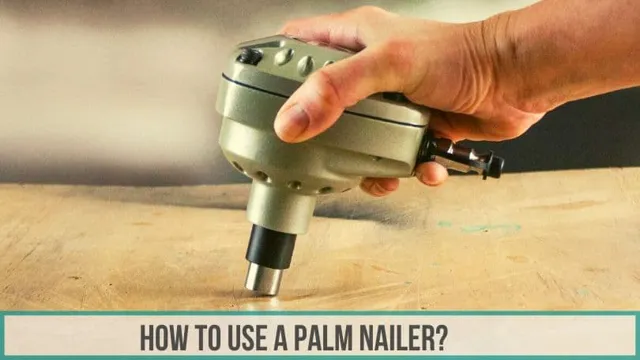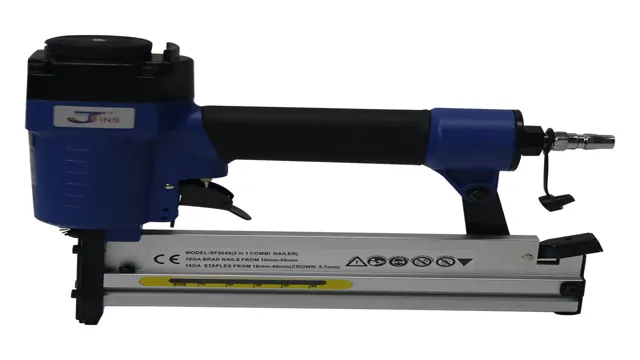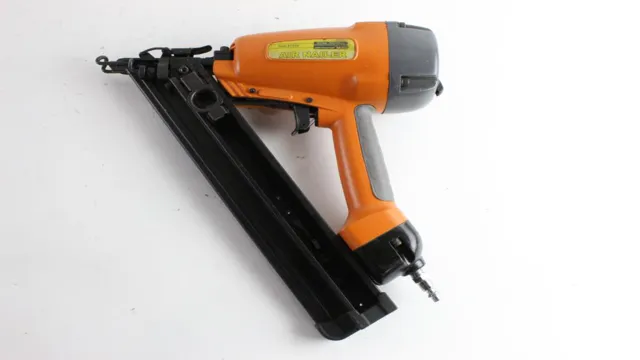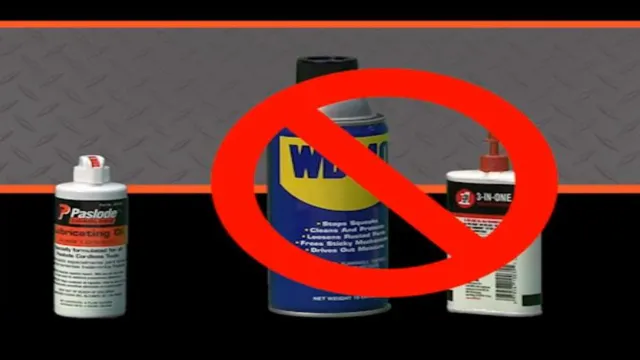How an Air Hammer Works: A Comprehensive Guide to Understanding Pneumatic Tools
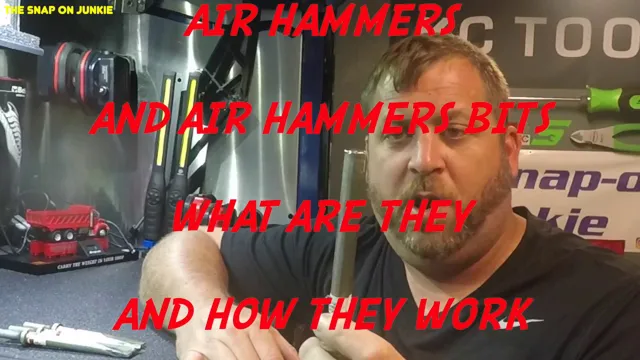
If you’re someone who loves to tinker with machinery or to build and customize your own home projects, then you must know how valuable power tools are. One such tool that you may have heard of is an air hammer, which can seemingly make tough jobs much easier. You might wonder how it works and if it’s the right tool for the job.
Well, in this article, we will discuss all you need to know about how an air hammer works. Think of it as your guide to understanding the science behind this workhorse of a tool. So, sit back, grab a cup of coffee, and get ready to dive into the fascinating world of air hammers!
What is an Air Hammer?
An air hammer, also known as an air chisel, is a tool that uses compressed air to create a powerful chipping or hammering action. It works by using the pneumatic power of compressed air to deliver rapid blows to a specific area of a workpiece. How an air hammer works is quite simple – a piston inside the tool reciprocates back and forth, powered by an air compressor.
When the air hammer is pressed against the workpiece, the piston moves back and forth rapidly, delivering a series of powerful blows. The interchangeable chisel or bit at the end of the air hammer can be swapped to suit the application at hand. Air hammers are commonly used in metalworking and automotive repair to remove rivets, bolts, welds, and to shape metal pieces.
They are highly efficient at quickly breaking up stubborn materials, making them an essential tool in any mechanic’s arsenal.
Definition of an Air Hammer
An air hammer is a powerful and versatile tool that uses compressed air to deliver fast and precise blows to a wide range of surfaces. It consists of a piston that moves back and forth inside a cylinder, creating high-pressure air that drives an impact mechanism and delivers a powerful punch. Air hammers come in various shapes and sizes, including chisels, punches, and hammers, and are typically used in automotive repair, metalworking, and construction industries.
They are ideal for heavy-duty applications that require high torque and force and are suitable for removing rust, cutting through tough materials, breaking concrete, and shaping metal. Overall, an air hammer is a must-have tool for anyone looking for fast and efficient ways to get their job done.
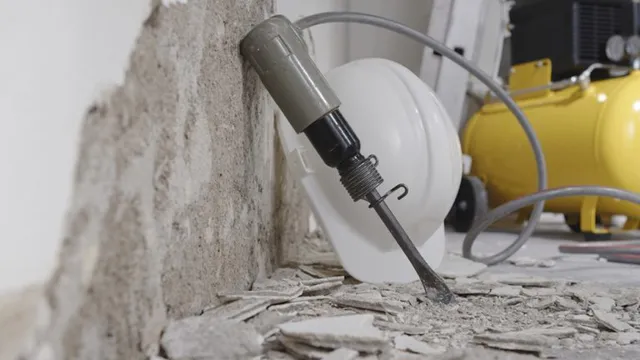
Types of Air Hammers
An air hammer is a versatile tool that is used in automotive, construction, and metalworking industries. It is designed to deliver powerful blows, making it a favorite of professionals who need to work with heavy-duty materials. Air hammers operate on compressed air and are used to remove stubborn rust, cut through metal, and break up concrete.
There are two main types of air hammers- standard duty and heavy-duty. The standard-duty air hammers are best suited for light-duty work, such as removing upholstery and cutting sheet metal. On the other hand, heavy-duty air hammers are designed to handle tough jobs, such as breaking concrete and cutting through thick metal.
Regardless of the type, air hammers are an essential tool for any professional who needs to get the job done quickly and efficiently. So, whether you are a mechanic, a construction worker, or a metalworker, a good air hammer is a must-have tool in your toolkit.
How does it work?
Air hammers, also known as pneumatic hammers or power hammers, are tools used for shaping and breaking up materials. But how does an air hammer work? Well, it uses a compressed air source to create a repetitive force that strikes an object. This force is generated by a piston moving back and forth inside the hammer’s cylinder, which in turn creates air pressure through a valve system.
When the air pressure reaches its peak, it releases a burst of air, known as a “hammer blow,” that strikes the chisel or punch the operator is using. The impact causes the material to fracture or deform, depending on the force and frequency of the hammer blows. The power of an air hammer is determined by the amount of air flow and pressure that can be delivered to the tool.
With pneumatic hammers, the operator can control both the frequency and strength of the blows, making it an incredibly versatile and efficient power tool for a variety of tasks, including metalworking, automotive repair, and construction work.
Pneumatic Power
Pneumatic power is an amazing technology that utilizes compressed air to produce energy. The process involves a compressor that compresses air into a storage vessel, which then provides power when released. Pneumatic power has been used in many areas, including transportation, construction, and even in dentistry.
It is a highly efficient system that is preferred by many industries as it’s clean, reliable, and safe. The air compression chamber serves as the engine in this system. When compressed, air is forced out with high speed, which then enables the production of energy.
Pneumatic power technology is useful in situations where combustible gases cannot be used. With the increase in demand for clean energy, we can expect pneumatic power to become more popular in the future. It’s an eco-friendly and cost-effective solution that is essential in reducing our carbon footprint.
Overall, pneumatic power is a crucial technology with endless possibilities for different applications.
Movement of the Hammer
The movement of the hammer is a crucial aspect of how hammers work. So, how does it work? The hammer’s movement involves a combination of force, momentum, and impact. When we swing the hammer, we apply force to the handle, which creates momentum.
As we approach the target, this momentum increases. Meanwhile, the weight of the hammerhead creates an impact upon contact with the nail or object being hit. This impact is what drives the nail into the wood or breaks apart the object.
The hammer’s movement is all about creating the right amount of force at the right time to achieve the desired outcome. The careful balance of force, momentum, and impact is what makes the hammer such a useful tool in construction, home repair, and many other fields. So, the next time you pick up a hammer, think about the movement and the physics behind it.
Components of an Air Hammer
An air hammer is a powerful tool used in various applications, such as metal fabrication, auto repair, and construction. The main components of an air hammer include a piston, cylinder, and valve. Compressed air is forced into the cylinder, which then pushes the piston back and forth.
The piston is attached to a chisel or other attachment, which is used to strike a surface repeatedly, breaking up materials or shaping them. The valve controls the airflow into the cylinder, allowing the user to adjust the speed and force of the hammer blows. Air hammers are also equipped with various features, such as interchangeable chisel heads and variable speed settings, to increase their versatility.
In summary, the air hammer works by using compressed air to power the piston, which strikes the chisel, producing high-impact blows to the work surface.
Advantages of Using an Air Hammer
An air hammer is a pneumatic tool that works by using compressed air to drive a piston back and forth inside a cylinder. This motion creates a force that is used to strike a surface, making it ideal for heavy-duty applications like breaking concrete, driving fence posts and shaping metal. One of the advantages of using an air hammer is its versatility.
Because it can be fitted with a range of attachments, from chisels to punches to rivet sets, it can be used for a variety of tasks. Additionally, air hammers are much faster and more powerful than hand tools, making them an efficient choice for tasks that would take a long time to complete manually. Another advantage of using an air hammer is that it produces less vibration than other types of hammers, which can reduce the likelihood of repetitive strain injuries.
Finally, because air hammers are powered by compressed air rather than electricity, they can be used in outdoor settings or in areas where electricity is not readily available. Overall, an air hammer is a versatile, efficient, and powerful tool that is suitable for a wide range of heavy-duty tasks.
Efficiency and Speed
Efficiency and speed are crucial factors when it comes to completing heavy-duty work tasks. That’s where an air hammer comes in handy, providing numerous advantages for those looking to increase their productivity. The main advantage of an air hammer is its ability to deliver faster and more powerful blows than traditional hammers.
This tool is ideal for tasks such as cutting, chipping, and shaping metal, making it a go-to for professionals in the construction and automotive industries. Additionally, since air hammers are powered by compressed air, they require less physical effort to use, reducing the risk of injury or strain on the operator. Overall, using an air hammer offers a highly efficient and time-saving solution for anyone looking to speed up their work processes.
Versatility and Precision
Air Hammer An air hammer is a versatile tool that can be used for a wide range of applications. It is gaining popularity among DIY enthusiasts and professionals alike because of its precision and performance. The tool features a pneumatic piston that delivers rapid blows to any object it comes into contact with.
The advantages of using an air hammer include its ease of use and its ability to work on a variety of surfaces, including metal, wood, concrete, and plastic. Its versatility makes it ideal for a broad range of applications, such as construction, metalworking, demolition, and automotive repair. The air hammer is also an excellent tool for tasks that require higher precision, such as door hinge removal, pipe cutting, and rust removal.
This tool is a valuable addition to any toolkit as it offers more power, control, and efficiency than conventional hand tools. If you want to invest in a tool that delivers excellent results across a broad range of applications, an air hammer is undoubtedly a wise choice.
Conclusion
In conclusion, an air hammer is a power tool that utilizes compressed air to create a rapid percussive force which drives a chisel or punch at incredible speeds. Through the pneumatic system, air is compressed and then released in quick bursts to produce a powerful impact on the material being worked on. This cutting-edge technology is not only fast and efficient, but it also helps to reduce operator fatigue and increase productivity.
In other words, an air hammer may be the perfect tool for pounding out a project with finesse and finesse, without feeling like you’ve pounded out your body as well.”
FAQs
What is an air hammer and how does it work?
An air hammer is a pneumatic tool that uses compressed air to deliver powerful, repetitive strikes. It works by forcing air through a valve, which creates a rapid succession of hammer-like blows.
What are the different parts of an air hammer?
The main components of an air hammer include an air compressor, a pneumatic cylinder, a piston, a valve, a chuck, and a bit.
What are the benefits of using an air hammer over other types of hammers?
Air hammers offer greater power and speed than traditional hammers, making them ideal for heavy-duty tasks like breaking concrete or chiseling metal. They also reduce strain on the user’s arms and wrists.
How do you choose the right size air hammer for your needs?
The size of an air hammer is determined by the diameter of its piston and the length of its stroke. For general purpose use, a 2-3 inch piston and 5-6 inch stroke length is usually sufficient.
What kind of maintenance does an air hammer require?
Regular maintenance is important to keep an air hammer functioning properly. This includes cleaning the air filter, lubricating moving parts, and periodically replacing worn or damaged components.
Can an air hammer be used for woodworking?
Yes, air hammers can be useful for woodworking tasks such as carving or morticing. Specialized chisels and bits are available for these purposes.
Are there safety precautions that should be taken when using an air hammer?
Yes, safety goggles and ear protection are essential when using an air hammer. Additionally, the tool should be used at the recommended pressure levels, and care should be taken to avoid overexerting oneself while using it.

